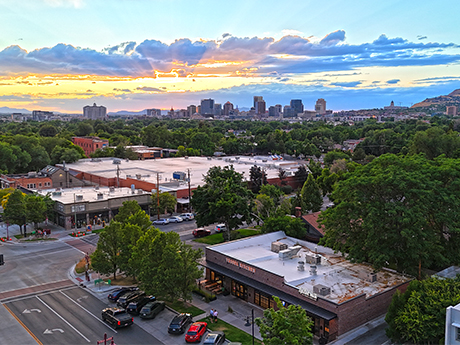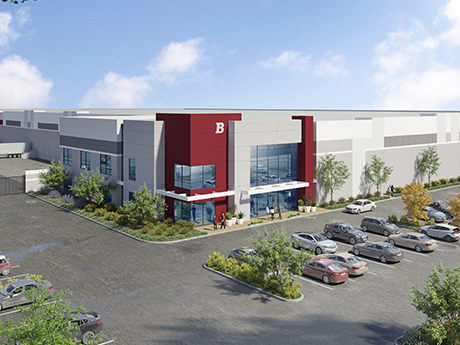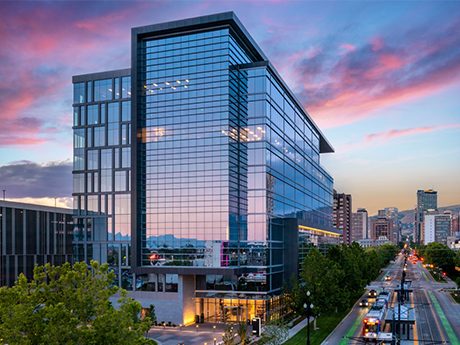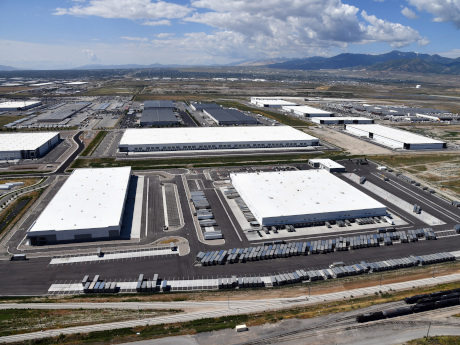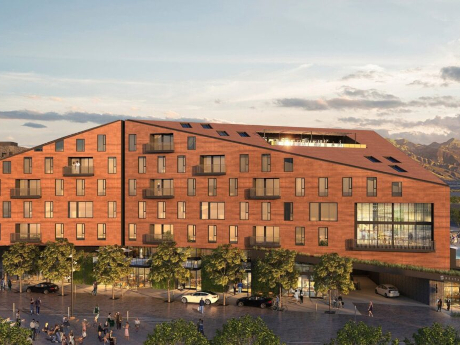— By Will Moss of MMG Real Estate Advisors — After a turbulent stretch marked by oversupply and softening rents, Salt Lake City’s multifamily market is showing signs of stabilization in early 2025. Demand is returning, rent declines are easing and investor confidence is on the rise, all pointing to a market that may have found its footing. “We’re not calling a full recovery just yet,” says Will Moss, sales agent at MMG Real Estate. “But what we’re seeing is a return to fundamentals, steady demand, measured construction and buyers who are ready to transact again.” In first-quarter 2025, net absorption reached 1,044 units, outpacing the 894 units delivered and marking the first time in over a year that demand exceeded new supply. Over the past 12 months, approximately 4,500 units were absorbed, well above the metro’s historical average. Demand Rebounds, But Challenges Linger Salt Lake City mirrors national trends where improved economic confidence and easing inflation have begun to unlock pent-up housing demand. Notably, demand has been strongest among mid-tier renters, though even luxury properties, despite being the main source of new supply, posted a 1.8 percent rent increase year-over-year. Still, rents overall declined 0.3 percent annually, continuing a …
Market Reports
— By Brian Anderson of CBRE — Utah’s retail market is shaped by its young population and large households, driving demand for big box stores and quality consumer brands. Utah has the youngest median age of any state in the U.S. by nearly four years, and the largest median household size. Our retail real estate market mirrors these realities. Large-box grocers and membership warehouses dot the landscape, creating gravity points that draw junior boxes, shops and restaurant users to these neighborhoods. Utah’s household incomes continue to rise, while the per capita income remains average. This has led to a concentration of quality — though not luxury — consumer brands in most retail centers. Despite challenges in construction and finance markets, Utah’s ongoing housing expansion is pushing box users and grocers to open new locations. The Salt Lake and Provo MSAs are expected to see several new big box and large grocery stores, mostly in outlying communities, after a quiet 2023 and 2024. Smaller-format grocers focused on organic food are also in permitting stages in established communities. These new locations will spark competition for restaurant and shop users. Health-conscious brands are expected to take space in desirable centers as 2025 progresses. …
— By Rawley Nielsen and Mark Jensen of Northmarq — The Salt Lake City apartment market has undergone significant shifts over the past few years, shaped by broader economic headwinds and local supply dynamics. Fortunately, optimism is returning to the market as interest rates stabilize, supply is absorbed and buyers see new opportunities to enter at attractive pricing. Over the past 36 months, rising interest rates have created challenges for multifamily investment, which have impacted underwriting and transaction velocity. However, recent weeks have provided a reprieve as Treasury rates have come down, bringing renewed energy to the market. Volatility remains a factor, but there is a growing sense that we are at or near the bottom, leading to increased investor interest. One of the biggest headwinds in Salt Lake City has been the supply wave, particularly in the downtown market where an influx of new multifamily deliveries has made it difficult for buyers to underwrite rent growth. Both 2022 and 2023 brought unit deliveries totaling more than 4,000 units, nearly triple the average annual delivery count from the past 10 years. We saw nearly 3,000 units delivered last year, and our team is tracking a similar amount for 2025. …
— By Rebecca Lloyd of Cushman & Wakefield — Industrial market conditions in Salt Lake City softened a bit in 2024, with new leasing activity totaling just over 5 million square feet — a 19 percent decrease from the 6.2 million square feet recorded in 2023. Despite this decline, new sublease activity saw a 33 percent year-over-year increase, reaching 735,000 square feet. Salt Lake City’s Northwest submarket remains the dominant area, accounting for 62 percent of total leasing activity in 2024. This was followed by the Southwest at 28 percent. Collectively, they comprise 90 percent of all leasing transactions in the market. Vacancy rates ended the year at 5.9 percent, a modest 50 basis point increase from the previous year. In a positive shift, the market closed the year with 3.7 million square feet of positive net absorption, a significant increase from the 2.3 million square feet recorded in 2023. The average asking rent for all product types stood at $0.81 per square foot on a triple-net basis, up from $0.80 at the end of 2023. Industrial construction remained robust, with nearly 4.7 million square feet of new space delivered in 2024. This added to the 7 million square feet …
— By Phil Brierley of JLL — The Salt Lake City office market continues to strengthen despite strong systemic headwinds. Last year was a banner year for leasing, with 4.8 million square feet of total leasing velocity. Silicon Slopes once again led all submarkets, representing 43 percent of all leasing. This was followed by the Greater CBD with 25 percent. Absorption was positive through the fourth quarter (for the second consecutive time) at 72,861 square feet, offsetting move-outs earlier in the year. Overall vacancy peaked in 2023 at 18.9 percent and is finally trending in the right direction. It finished the year at 18.6 percent. Subleasing is still a soft spot, especially in Silicon Slopes, with 300,000 square feet of new sublease space hitting the market in the fourth quarter of 2024 alone. Sales volumes rebounded after a dismal 2023, clocking in at $518 million in 2024. RCA notes this is close to the trailing 10-year average of $587 million. Much of that velocity was driven by user sales, including Salt Lake County’s acquisition of the Peace Coliseum, Canyons School District’s purchase of the eBay regional headquarters, the University of Utah’s acquisition of City Center downtown and Onset Financials’ acquisition …
— By Jarrod Hunt of Colliers — Utah’s industrial real estate market continues to show resilience in 2025, supported by healthy tenant demand and an evolving mix of warehouse, flex and manufacturing product types. Leasing activity remains particularly strong in the 20,000- to 50,000-square-foot range, with a steady stream of local fulfillment and light manufacturing tenants driving mid-sized requirements across the Wasatch Front. Product Type and Demand Trends With enhanced industrial tracking now focused by building type, warehouse space stands out as the most active, though flex and light manufacturing buildings are seeing targeted interest. Mid-sized tenants seeking efficient, modern, move-in-ready space continue to account for most lease activity, favoring locations with convenient access to transportation corridors and workforce hubs. South Market Poised for a Breakout Year The South Utah County market is positioned for another active year, with a wave of new deliveries and groundbreakings happening this year. The Ritchie Group’s Global Logistics Center near the Spanish Fork Airport is the region’s largest project. It will feature 13 planned buildings comprising 3.3 million square feet, and early leasing interest is encouraging. While the Central market has led to early year absorption, momentum in the South is expected to build …
Badiee Development has logistics and industrial projects throughout the Western U.S., but its current focus is the region’s three S’s: San Diego, Sacramento, Calif., and Salt Lake City. “Badiee Development is prioritizing leasing at our existing projects in San Diego and Sacramento, and entitling future projects in San Diego, Sacramento and Salt Lake City,” says Ben Badiee, the firm’s founder and CEO. “Our company holds a ‘land bank’ with plans to develop more than 2 million square feet across four distinct projects in three markets.” San Diego Badiee’s headquarters is ripe with industrial ventures for the firm. These include the two-building, 242,969-square-foot Sanyo Logistics Center and the 38-acre Britannia Airway Logistics Center, both of which are being built near the Mexican border in Otay Mesa. Britannia Airway has also been entitled for an interim use of industrial outdoor storage (IOS), allowing the project to accommodate about 1,000 trucks and trailers. “Being in our ‘backyard,’ Otay Mesa has proven to be a highly successful market for the firm,” Badiee says. “It is at the forefront of the onshoring/nearshoring trend for the U.S. and Mexico, and land availabilities are scarce.” Sacramento Land scarcity has also been a driver for Badiee in Sacramento …
— By Nadia Letey, senior vice president, CBRE — The global office landscape has markedly changed post-pandemic. Now, amidst economic headwinds and the ongoing stabilization of return-to-office mandates, U.S. office markets like Salt Lake City are undergoing various shifts that are set to shape real estate dynamics in 2024. At the same time, Utah’s economy remains a highly desirable location to do business, in large part bolstered by an exceptionally strong talent pool. What’s Changing: Development Slowdown Poised to Ease Supply Demand Imbalances Salt Lake City saw a 42 percent year-over-year decrease in total office space under construction in fourth-quarter 2023, marking an all-time low. High interest rates, along with record-high vacancies, will continue to deter developers from breaking ground in the near term without significant pre-lease activity. This thinning construction pipeline will likely reduce supply side risks over the next several years as demand can be placed within second-generation space with elevated vacancy. Existing properties — especially in amenity-rich locations — will do well to attract tenants. The emphasis on creating a collaborative and inviting workspace will continue to be important to bring employees into the office. Projects that are moving from planned to under construction are hedging their risk by …
— By Jarrod Hunt, vice chair, Colliers — The Utah industrial market continues to perform very well given the reduction in the average deal size in 2023 (illustrated in the charts for both Utah and Salt Lake Counties below). The entrepreneurial spirit that continues to be the backbone of Utah’s economy is evident with the smaller lease sizes. This was a welcome opportunity for companies confined to limited options for growth over the past economic run-up. However, we have seen a notable increase in out-of-market tenant inquiries, with many in search of larger blocks of space in the New Year. We expect the pendulum to swing the other direction this year with an increase in the average square footage of completed deals, an overall increase in the number of deals and a reduction in the vacancy rates, which will put a solid floor on lease rates. The reduction in vacancy is most attributable to the stark reduction of construction deliveries in the two main county markets, Salt Lake and Utah counties (per the charts below). This dramatic reduction in speculative building activity is “on brand” for Utah, being a very disciplined market for new construction compared to several other high-growth …
— By Kip Paul, vice chair; Michael King, director; and JT Redd, senior associate, Cushman & Wakefield — The Salt Lake City multifamily market has experienced significant growth in recent years. This reflects the influx of new residents to the State of Utah, in addition to notable increases in average household income. Developers have responded to this growing demand by delivering an unprecedented amount of rental housing inventory to the market. Since 2020, new deliveries averaged 12 percent of Salt Lake’s inventory base each year. Despite increases in apartment supply, overall fundamentals remain strong. Last year’s vacancy rates remained below 4 percent for the 12th consecutive year, while rental rates surged from $1,182 to $1,654 between 2020 and 2023. Salt Lake City’s renowned access to the outdoors and high quality of life place the city in a league of its own, positioning it to continue to capture apartment demand for years to come. What Sets Salt Lake Apart The Salt Lake City multifamily market stands out due to several key features. First, it offers affordability. Rental rates remain below 30 percent of residents’ average income despite overall increases in apartment prices. Second, Salt Lake City provides unparalleled access to outdoor …
Newer Posts


